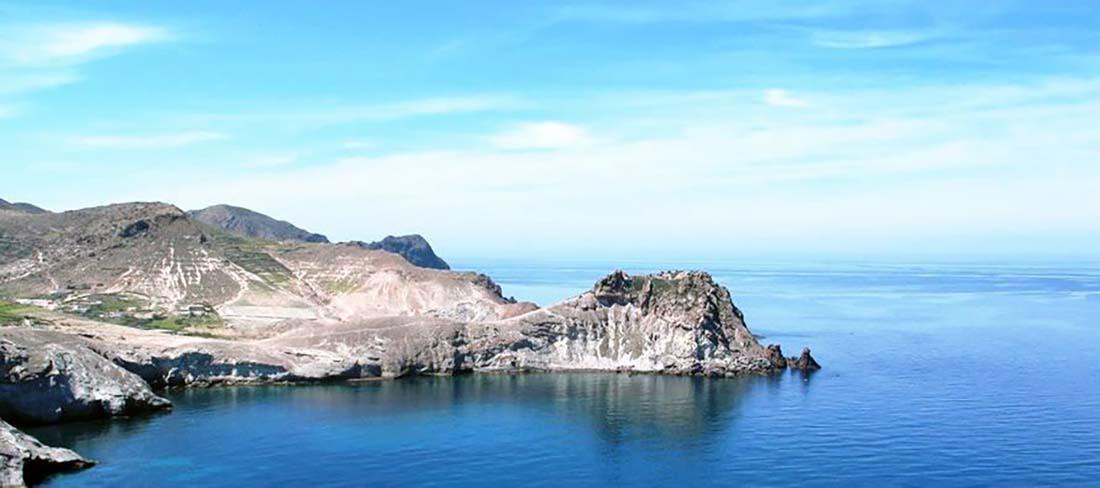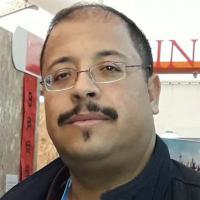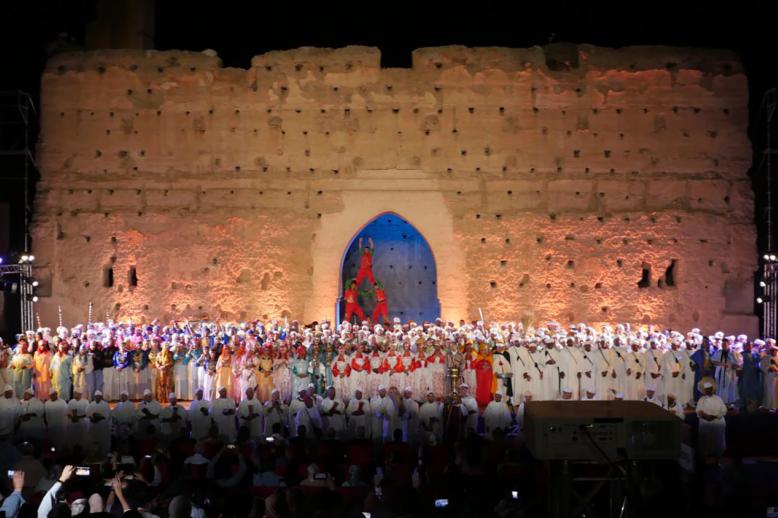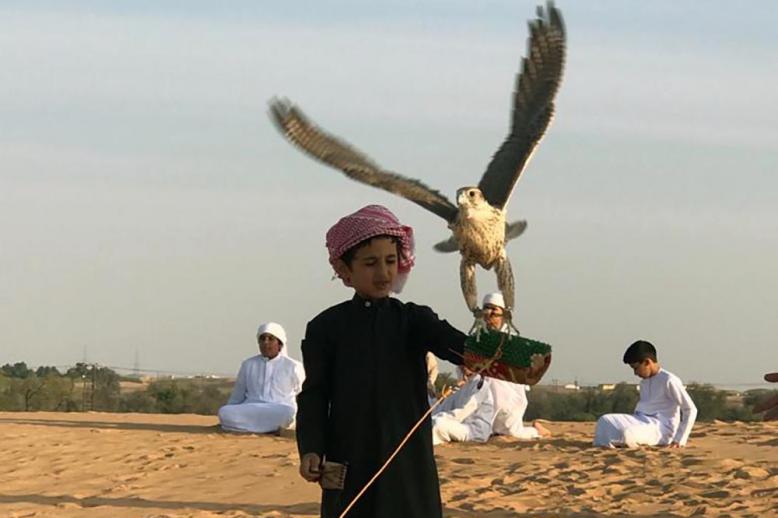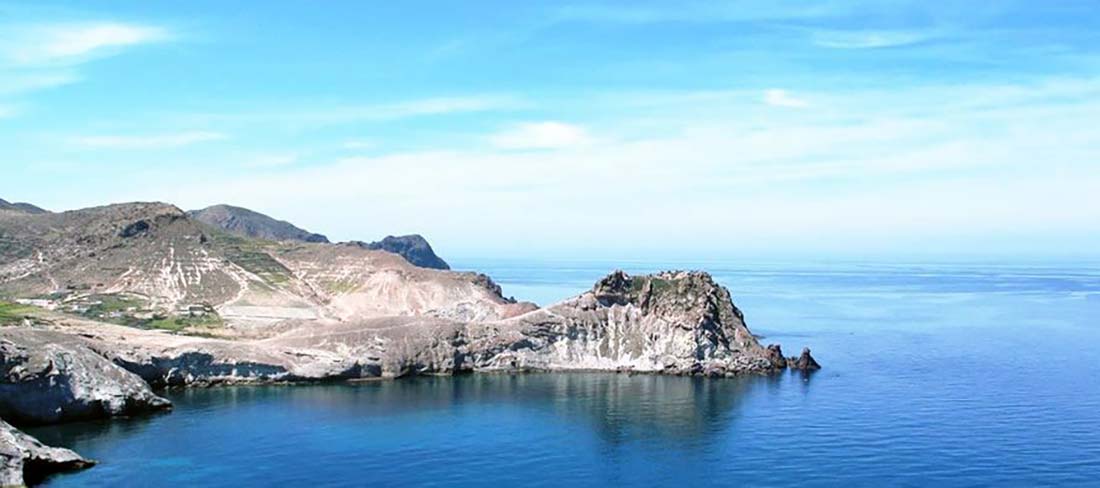“Cap Three Forks” a great diversity of ecosystems and landscapes on the Morocco’s Mediterranean Sea
It goes without saying that the Mediterranean basin is one of the most diverse areas on our planet. But it is threatened by overexploitation, habitat loss and the impacts of climate change. Morocco's Mediterranean coast is an important home to several endangered species.
The international community concerned with the marine environment at all levels submits recommendations and arguments in order to preserve the unique natural resources and inventory of the Moroccan Mediterranean bank.
Morocco's Mediterranean coast appears in the form of four large cavities of varying dimensions. Following the Saidia beach in the east, there is the first groove, which is about 80 km long, starts at the head of water, followed by the “Ras Wark” outcrop (Cape Three Forks).
It extends towards the sea. In this part, there is a 24-kilometer coastal strip that separates Lake Nador from the sea. The second cavity, similar in size to the previous one, extends to the west to “Ras El Tarf” (Ras Tarf) in Tetouan (Tétouan) bordering Al Hoceima Bay (Al Hoceïma) to the east.
The coast is shaped like a large concavity and is very open. It gradually changes from an east-west direction to a south-north direction between the strait and the hotel. The entire coast is a series of cliffs interspersed with small beaches.
The Moroccan Mediterranean coast has a diverse terrain. It looks like a large arch east of “Ras Wark” (Cape Three Forks), which includes a series of steep cliffs cut by deep valleys, carved naturally at a height of 70 meters of red earth material, along 30 kilometers of the slopes of “Kabdana” (Kebdana) and then sandy terrain that isolates Lake “Bouarak” between the areas of “Arkman” "(Arekmane) and Nador (Nador). Seductive and picturesque natural scenes.
From here comes “Ras Wark”, (Cape Three Forks) in the Eastern Region of Morocco, to furnish the beautiful landscape spaces of the Moroccan Mediterranean Bank. It is a majestic beach rock or a penetrating mountain outcrop, about 20 kilometers, on the Mediterranean coast, 25 kilometers north of Nador (Nador) and on the outskirts of the Spanish colony of Melilla. One hundred kilometers from the Algerian border, it extends over an area of 8000 hectares, two thirds of its maritime area. As a populated village, it belongs to the village community of Bani Shakir. (Rural Commune Bni Chiker)
Cape Three Forks looks like an island. A majestic mountainous area in the middle of a marine landmark with a wide range of seascapes, characterized by clear water. It is surrounded by small scattered sea islands. And charming shiny beaches, full of pebbles. Its terrain is estimated to be 65 meters above sea level.
About 35 kilometers away, a lighthouse is visible at the front of (Cape Three Forks) with a height of 18 meters. Stories were woven around it about the reasons for its construction. According to the oral version of the people of the area, a Spanish battleship ran aground and crashed on the site. This prompted the Spanish colonizer in the area to build a lighthouse in 1927 AD to prevent the collision of shipping ships and facilitate visibility in front of passing ships.
The (Cape Three Forks) area isof great environmental importance for its prominent role in the preservation of biodiversity on the Maghreb Mediterranean coast. Several scientific studies and research have recommended making the area a marine reserve. In 1996, residents of the area were encouraged to classify the site as biologically and ecologically important(SIBE) through the Management Plan for Protected Areas in Morocco. In 2005 it was designated as the “Ramsar” WetlandSite.
The region has living ecosystems and charming natural resources that are essential to the livelihoods of its local residents, but it remains small and fragile. The main activities that take place in the area are fishing and tourism.
The coastal villages in the area are remote, areas of social fragility and rugged paths. Its inhabitants are forced to live in a steep, rocky, arid and salty land. However, it requires living near waters where catching fish becomes increasingly difficult.
The region has already witnessed a scientific study that allows creating initiatives that provide opportunities and knowledge, ensure access to resources and invest joint efforts between researchers, farmers and poor fishermen, men and women, in order to sustain income sources and adapt to climate change.
The residents of the village of “Tabouda” (TIBOUDA)adjacent to Cape Three Forks practice some traditional crafts such as fishing, farming, livestock raising and living on various natural resources. The region also suffers from geographical isolation. It takes about half an hour to reach the nearest village and an hour to reach the city of Nador (NADOR). The road to the top of the head has been connected through the lighthouse, but it remains difficult, requiring restoration and extension. Work is under way to open access to villages in the isolated area.
The fishing community in the area relies on fishing boats measuring 5 to 6 meters in size. Other complementary activities directed towards mountain crops are terraced fields such as horticulture, grains, legumes and tree crops. The region is witnessing the migration of some residents towards neighboring cities and outside Morocco.
Professor Abdellatif Al-Khattabi, (Abdellatif Khattabi) the expert in Climate Change and former coordinator of the Climate Change Adaptation Project in Morocco, says that the region has risks related to climate change such as higher temperatures, increased frequency and unpredictability of extreme events, such as heat waves, storms and floods. These manifestations and developments have a direct impact on the local community because they threaten traditional agricultural activities through increased evaporation, reduced availability of water for agriculture, and erosion of fragile soils. It also has a negative impact on fishing through a reduction in the number of fishing days, a decrease in the availability of fish, and hence the quantity and quality of fish caught.
Professor Al-Khattabi (Pr Khattabi) added that studies have already been carried out in the context of the project to adapt to climate change in Morocco that have worked to enhance the adaptation capabilities of the residents of the “Tabouda” (TIBOUDA) area in the village community of Beni Shakir.” (Rural Commune Bni Chiker)
With the effects of climate change, and the development of fragility of local ecosystems that are threatened by worsening climate changes. The project chose two main pivotal approaches as a field of intervention in terms of adaptation to climate change: improving artisanal fishing practices in order to facilitate the adaptation of fishing to climate change and agriculture and water, i.e. the ability of agricultural activities to reduce the reduction of water resources and the salinity of soil and water, by collecting rainwater and improving resource management.
The scientific study has made it possible to create initiatives that provide opportunities and knowledge, ensure access to resources and invest joint efforts between researchers, farmers and poor fishermen, men and women, in order to sustain income sources and adapt to climate change. It requires more research and study to find ways to support and enhance the capabilities of the region's residents in accordance with a precise scientific strategic vision.
The marine environment of the site hosts different types of fish and whales, some of which are threatened with extinction. There are loggerhead turtles, fin whales, and types of dolphins. The people of the area expressed their regret over the extinction of the monk seal. it has not been seen for years.
Dr. Naguib Al-Waamari (NAJIB ELOUAMARI), head of the Regional Center of the Institute of Fisheries Research in Nador reported that 180 species and ten types of benthic communities have been identified. The marine biological communities included in the area vary depending on the nature of their habitat. The “Ras Wurk” site is of great environmental quality and includes many species with a vital index and a great diversity of species, whether protected species or species of commercial importance. It is also characterized by a diversity of habitats such as meadows and rocky caves.
Dr. Najib El Ouamari, the head of the Regional Center of the Marine Research Institute in Nador, reported that 180 species and ten types of benthic communities have been identified. The marine biological communities in the region vary according to the nature of their habitat. The Cape Three Forks, with its high environmental quality, hosts numerous species with significant ecological indicators and a wide diversity of species, whether protected or commercially important. It is characterized by diverse habitats such as seagrass meadows and rocky caves.
Dr. El Oumari added that the waters of Cape Three Forks serve as a habitat for many important species, contributing significantly to the conservation of marine biodiversity in the Moroccan Mediterranean, including coral reefs, light-loving algae communities, algae such as Lithophyllum and Mesophyllum, Phymatholiton, red algae Rhodophycée, Cymodocea nodosa seagrass, Phymatholiton, red algae Rhodophycée, Cymodocea nodosa seagrass, shade-Loving cave plants Sciaphiles, and flowering marine seagrass meadows.
The Lithophyllum, Mesophyllum, and Phymatholiton types of algae are found in the coastal rock bottoms primarily in the western region of Cape Three Forks. Moreover, red algaeRhodophycée Peysomnelia are found in semi-dark caves and marine meadows like Cymodocea nodosa, which are located on sandy substrata throughout the coastal strip of the site at depths ranging from 10 to 30 meters, and other species are found on rocky bottoms. The site includes subsurface light-dependent algae that settle on well-lit rocks or sediments. These are the most common species in Cape Three Forks, observed along the entire coast, according to Dr. El Ouamari.
The site contains many corals and sponges such as the yellow clathrin sponge, Clathrus of the Clathrinidae family, Chondrosia Reniformis of the Chondrosiidae family, Axinella damicornis from the Axinellidae family, Axinella species, the blue-coated sponge Phorbacias Tenor from the Hymedesmidae family, “Phorbaceae” , stone sponge Petrobia from the Hymedesmiidae family, “Phorbaceae”, stone sponge Petrobia from The Petrosiidae family and the species “Petrosia”.
The corals mainly include the solitary yellow coral Leptopsammia pruvoti from the Dendrophylliidae family, the species “Leptopsammia,” the orange coral Astroides calycularis from the Dendrophilliidae family, the species “Astroides,” as well as the gray-coated Epizanthus arenaceus from the Epizoanthidae family and the species “Epianthus.”
It should be noted that some species recorded in the Cape Three Forks region are indicative of biological conditions in clean and renewable waters with a low sediment load, reflecting good water quality. Also, the remarkable diversity of species and habitats in this site contributes to its important environmental quality.
Said Azwaagh (SAID AZAOUAGHE), the coordinator of the East Side of the Research Group for the Protection of Birds in Morocco, (GREPOM BIRDLIFE Maroc) The nature of the “Ras Wurk” site (Cape Three Forks) is rocky, and due to its lack of a suitable breeding ground for bird feeding, its importance in ornithology is evident in it being a resting place for seabirds such as Sternes, Goéland's Gulls, Audouin's Gull, and Yellow-footed Gull, which feed on discarded fish remains. Some of them are by surface or tow fishing boats that roam the site day and night. The site is also considered a favorite place to observe migratory birds in groups during two periods before breeding (prenuptial) at the end of spring or after breeding, beginning of autumn (postnuptiale), the most important of which are eagles (the brown vulture), kites (Milan Noir) and the pink flamingo. And cranes (Les Grues Cendrés) and seagulls, in addition to waterfowl (Fou de Bassan et Puffin).
Abdel Salam Al-Waaliti (ABDESLAM EL OAALITI) one of the residents of the area, said that “Ras Wurk” (Cape Three Forks) is a wonderful tourist product that includes good natural resources that attract tourists. The area is very important environmentally and socially and is attractive in tourism.
The site is a destination for many visitors and tourists from all over the world. Visitors to this pristine natural masterpiece go to several swimming and diving enthusiasts who enjoy discovering the aesthetic characteristics of the area. They perform recreational activities and cruise tours with small boats provided by the people of the area. Residents of the area practice traditional fishing activities and some wild crops based on low rainfall.
Abdel Salam added, “In order to end the isolation of villages in the area, the concerned authorities are now extending routes to villages that are isolated due to the mountainous geographical nature of the area.” Some local residents expressed their desire to speed up the work so that the people of the region can benefit from the expected tourist turnout next summer because they have a unique and qualitative tourist product on the Mediterranean coast.

